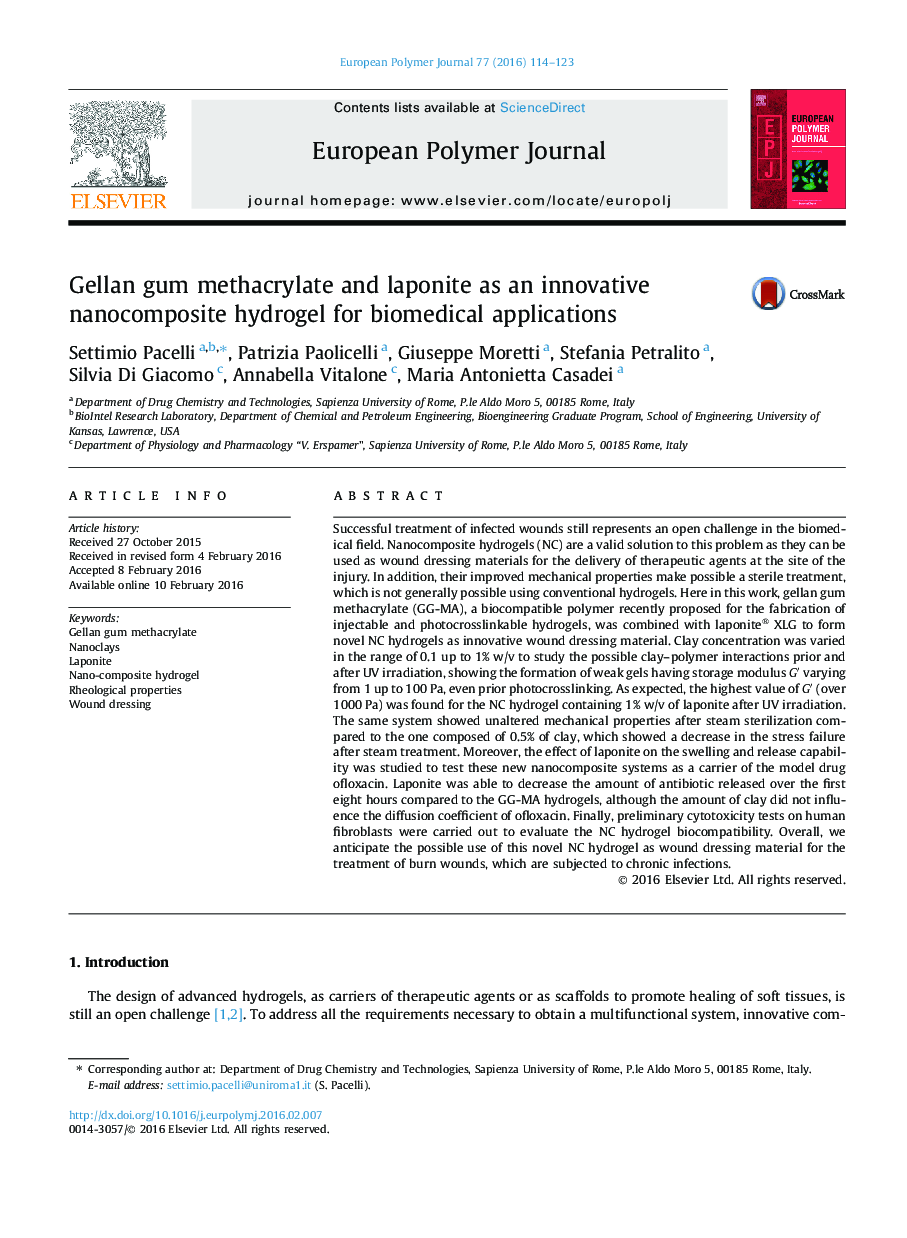| کد مقاله | کد نشریه | سال انتشار | مقاله انگلیسی | نسخه تمام متن |
|---|---|---|---|---|
| 1401410 | 1501358 | 2016 | 10 صفحه PDF | دانلود رایگان |

• Enhancement in gel mechanical properties by varying the concentration of laponite.
• Formation of a nano-composite systems capable of withstand steam sterilization.
• Laponite control over diffusion rate of a model drug such as ofloxacin.
Successful treatment of infected wounds still represents an open challenge in the biomedical field. Nanocomposite hydrogels (NC) are a valid solution to this problem as they can be used as wound dressing materials for the delivery of therapeutic agents at the site of the injury. In addition, their improved mechanical properties make possible a sterile treatment, which is not generally possible using conventional hydrogels. Here in this work, gellan gum methacrylate (GG-MA), a biocompatible polymer recently proposed for the fabrication of injectable and photocrosslinkable hydrogels, was combined with laponite® XLG to form novel NC hydrogels as innovative wound dressing material. Clay concentration was varied in the range of 0.1 up to 1% w/v to study the possible clay–polymer interactions prior and after UV irradiation, showing the formation of weak gels having storage modulus G′ varying from 1 up to 100 Pa, even prior photocrosslinking. As expected, the highest value of G′ (over 1000 Pa) was found for the NC hydrogel containing 1% w/v of laponite after UV irradiation. The same system showed unaltered mechanical properties after steam sterilization compared to the one composed of 0.5% of clay, which showed a decrease in the stress failure after steam treatment. Moreover, the effect of laponite on the swelling and release capability was studied to test these new nanocomposite systems as a carrier of the model drug ofloxacin. Laponite was able to decrease the amount of antibiotic released over the first eight hours compared to the GG-MA hydrogels, although the amount of clay did not influence the diffusion coefficient of ofloxacin. Finally, preliminary cytotoxicity tests on human fibroblasts were carried out to evaluate the NC hydrogel biocompatibility. Overall, we anticipate the possible use of this novel NC hydrogel as wound dressing material for the treatment of burn wounds, which are subjected to chronic infections.
Figure optionsDownload as PowerPoint slide
Journal: European Polymer Journal - Volume 77, April 2016, Pages 114–123